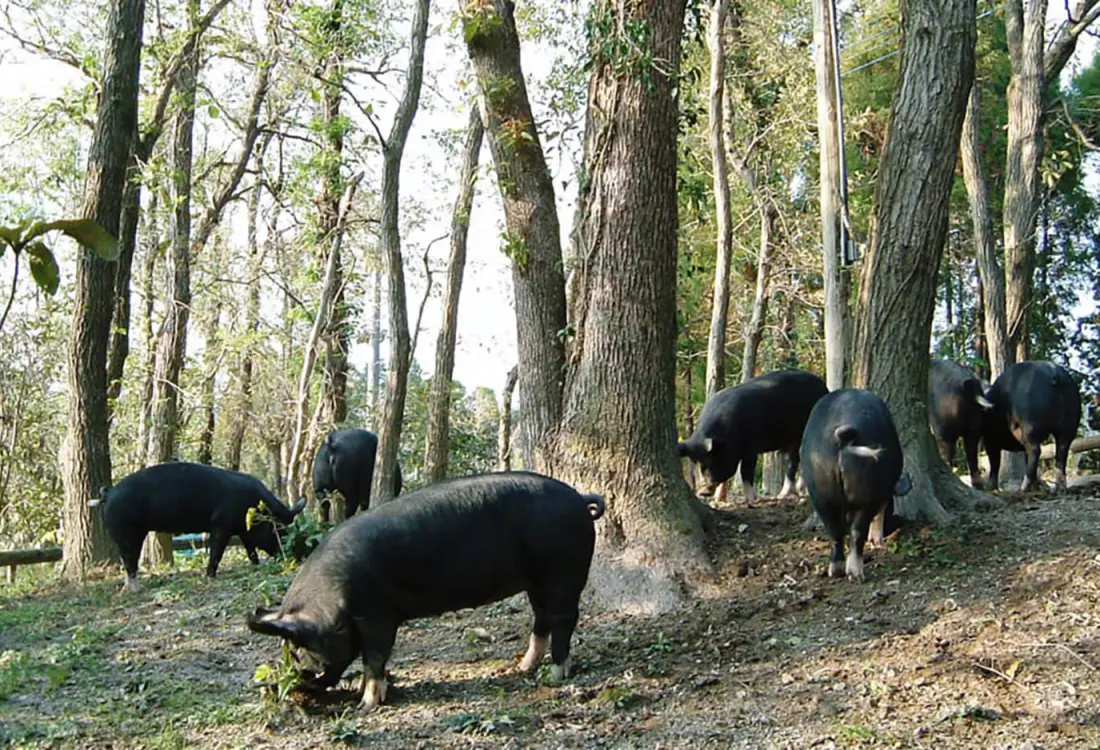
The delicious secrets of Kagoshima's
free-range Kurobuta pork
They have jet black bristles and cute, curly tails.Kurobuta pigs are said to have been brought to Kagoshima from the Ryukyu Kingdom approximately 400 years ago by Shimazu Iehisa.Tokugawa Nariaki, the lord of the Mito Domain and a leading figure in the Tokugawa Shogunate, as well as Saigo Takamori, a major player in the Meiji Restoration, are reputed to have been extremely fond of the taste.Having heard that there was a couple breeding free-range Kurobuta pigs, one of the representative tastes of Kagoshima prefecture, we paid a visit to Kanoya in that prefecture.
”It is an extremely delicate, exquisite and delectable taste, and most of all, it is full of nourishment.” It is the taste of Kurobuta pork praised by Tokugawa Nariaki, the lord of the Mito Domain. The Kurobuta pig breed was born from pigs brought to Kagoshima from the Ryukyu Kingdom which were later mated with Berkshire pigs brought from England. Currently, the Kurobuta pigs bred by the Kagoshima Kurobuta Producers’ Convention Association of Kagoshima prefecture are shipped as Kagoshima prefecture’s brand meat “Kagoshima Kurobuta (black pork).” Due to the six white markings on their four limbs, snout and tail, they are also called “Roppaku (six white marks)” and they are shipped after being fed for a period of 230 to 270 days, roughly 1.2 to 1.5 times that of ordinary pigs. It has been scientifically attested that the amount of amino acids contained in this pork creates a sweet and savory flavor, and its delicate flesh is characterized by being crisp when bitten and very juicy. The fatty parts are not greasy and have a refreshing taste.


Takeo Tanaka and his wife, Yoko started breeding Kurobuta pigs at the foot of Takakumayama located in the central area of the Osumi Peninsula in 1989 under the name “Sanshinya.” Takeo says “I wanted to breed delicious Kurobuta pork that can be eaten with safety and peace of mind for the children of the 21st century.” He put together an environment of 18,000 m2 clearing forest areas where his pigs can graze. He also dug an 86 m deep well, thus ensuring outstanding quality drinking water. This completed the comfortable living conditions for the Kurobuta pigs. What is more, the pig sty floor has excellent drainage, and he also goes to the additional effort of spreading volcanic sedimentary silas from Sakurajima, which has an antibacterial effect, over the floor. He gives them a unique blend of various ingredients, including non-GMO grains and rice bran, as well as sweet potatoes and potatoes, and even barley grass that he cultivates himself without the use of agricultural chemicals, which evidence his thorough attitude to breeding. The pigs feed on acorns and red soil, frolic, take midday siestas… The Kurobuta pigs live unconstrained, and grow up healthy and stress-free. Takeo goes on to say “That’s why I have no need to give them antibiotics for disease prevention or growth hormones.” Sanshinya fattens the Free-range Satsuma Kurobuta pigs over a period of 300 days. Because breeding his pigs this way takes time and effort, the number of pigs that can be shipped out in year is limited to 500 animals. His attitude of environmental conservation and the pursuit of high quality over mass production has been well received, and he was presented with the grand prize of the “Food Action Nippon Awards” certified by the Ministry of Agriculture, Forestry and Fisheries of Japan in 2015.


At this BBQ garden in Kanoya run directly by the producer, you can enjoy charcoal-grilled, Free-range Satsuma Kurobuta pork.
As soon as you place the slices of Free-range Satsuma Kurobuta pork on the hot wire grill, the silvery-white fat begins to melt. After both sides of the meat are golden brown, it is lightly sprinkled with kettle-boiled salt. Placing the steaming hot meat in your mouth sees the fatty flavor spread whilst a tender sweetness swells and envelops your tongue. The dense texture of the red meat allows you to cut through it with one bite, and the savory flavor is delectable. It has none of the distinctive overpowering smell of pork.
But there is something that you suddenly realize. Regardless of how many slices of fatty rib meat you eat, you will not suffer from indigestion, and it has a refreshing aftertaste. Your mouth will be free of that greasy flavor, and you will find your chopsticks almost moving by themselves to the next slice.


Sanshinya has a processing center, and the company itself carries out every facet ranging from the breeding of the Kurobuta pigs to meat-packing and processing all the way to delivery. The most popular is the “meat pickled with miso.” On a base of rice miso from Kagoshima, soy sauce, sugar, garlic and Kabosu citrus juice are blended to create a bed of miso, and the individual pieces of Free-range Satsuma Kurobuta pork are wrapped in gauze and pickled as they are left to mature. The firm seasoning that goes perfectly with white rice and which has the advantage of simply needing to be grilled at home has also been very well received, and the product is the object of an endless stream of orders from outside the prefecture. Since every product is made by hand and no preservatives, colorings or artificial sweeteners or other additives are used, they can be eaten with complete peace of mind.



The BBQ garden is in the middle of a copse, and you can enjoy a meal as you listen to the chirping of the birds. Most of the vegetables which come with the free-range Kurobuta pork assortment are cultivated in-house products from the prefecture. You can also select from a menu of individual dishes such as the “Offal mix” or “Arabiki (coarsely ground mince) sausage,” and in summer you can also enjoy charcoal grilled bamboo shoots from the mountains behind.
7357-1 Kasanohara-cho, Kanoya, Kagoshima prefecture
Tel: 0994-44-5196(Sanshinya)
Business hours: 11:00 to 14:00 and 17:00 to 21:00
Only available by reservation
https://sanshinya.jp
 The delicious secrets of Kagoshima's free-range Kurobuta pork
The delicious secrets of Kagoshima's free-range Kurobuta pork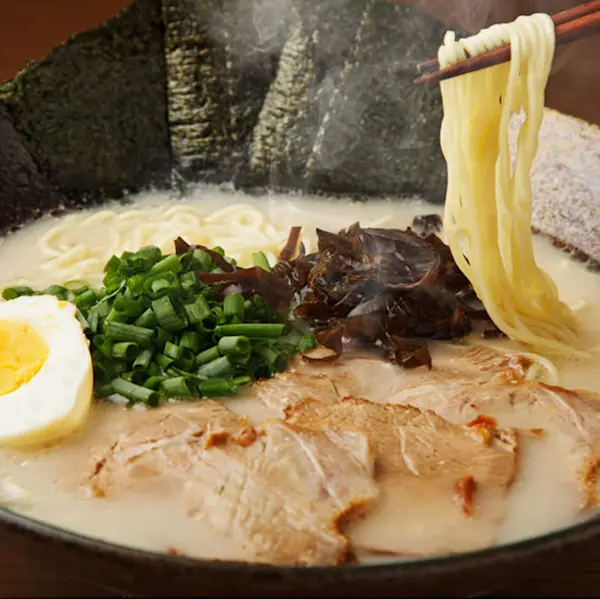 Everything You Need to Know About Fukuoka’s Famed Tonkotsu Ramen
Everything You Need to Know About Fukuoka’s Famed Tonkotsu Ramen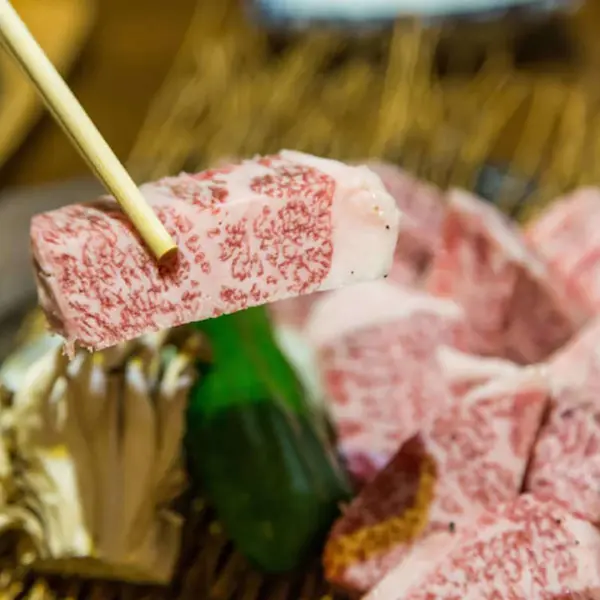 Saga Beef: Wagyu To Remember
Saga Beef: Wagyu To Remember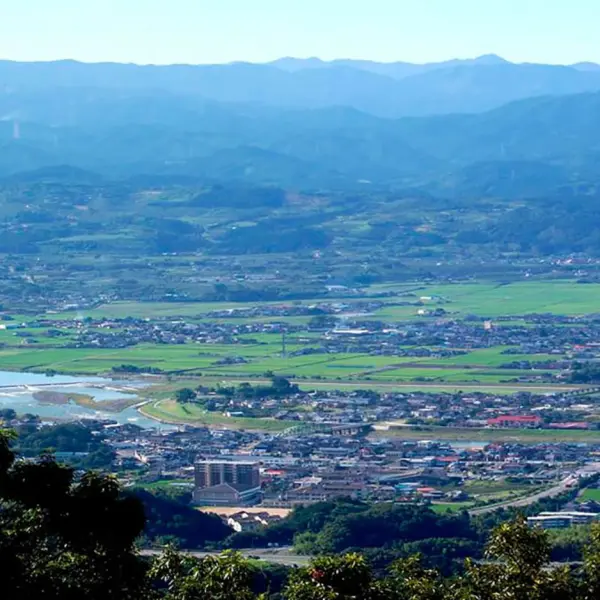 Discover Fukuoka's fruit kingdom
Discover Fukuoka's fruit kingdom Goto udon: a delicious legacy of Nagasaki's ancient trade routes
Goto udon: a delicious legacy of Nagasaki's ancient trade routes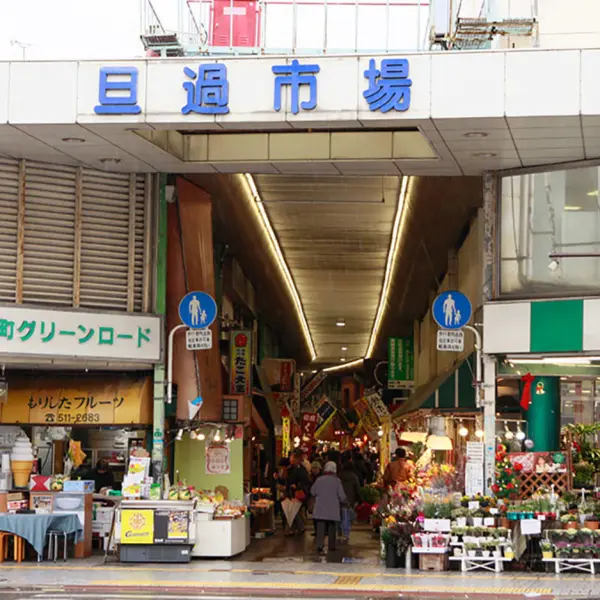 Feast your senses at Fukuoka's bustling fresh food market
Feast your senses at Fukuoka's bustling fresh food market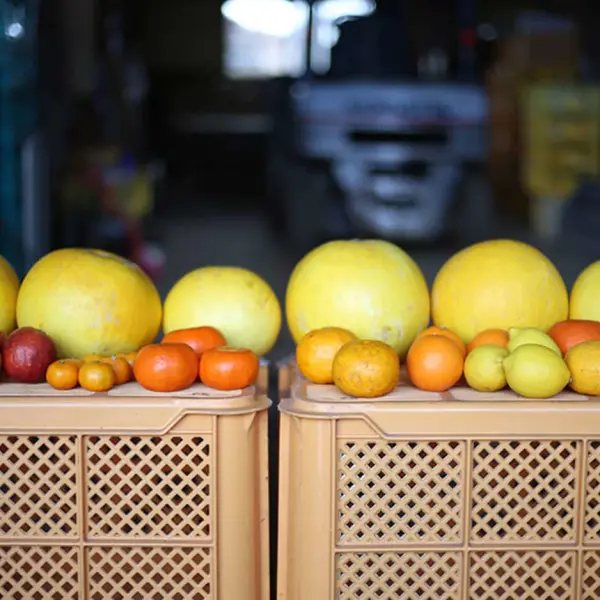 Cultivating the world's largest citrus fruit in Kumamoto
Cultivating the world's largest citrus fruit in Kumamoto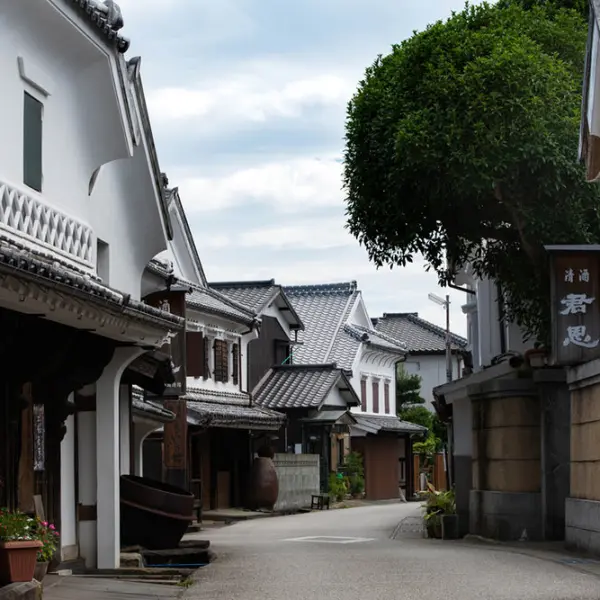 Hizen Hamashuku: Historic breweries that house the world’s best sake
Hizen Hamashuku: Historic breweries that house the world’s best sake In the shadow of a volcano: the world's largest daikon radishes
In the shadow of a volcano: the world's largest daikon radishes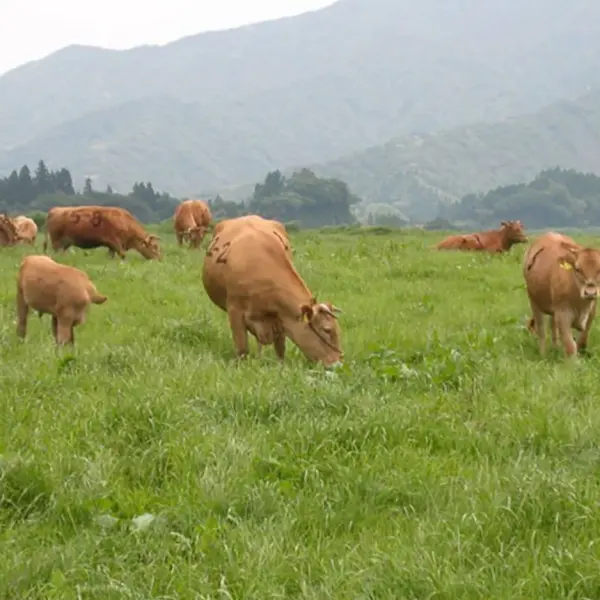 Raising Kumamoto's famed Japanese Brown Cattle
Raising Kumamoto's famed Japanese Brown Cattle




